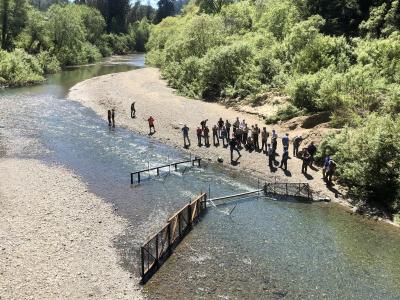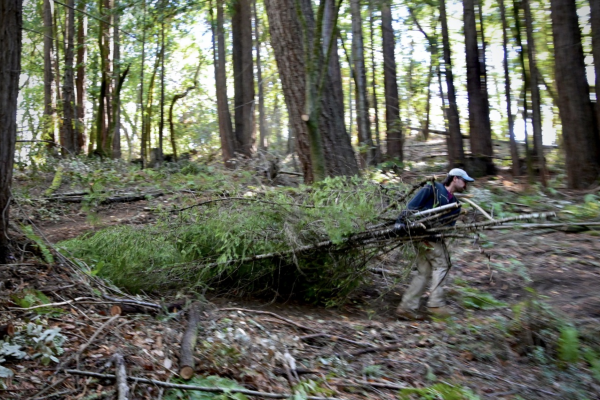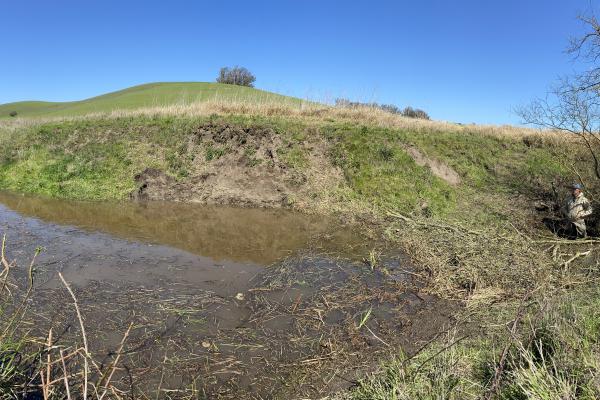Holding Space—Restoring Habitat and Making Room for Innovation
March 26 - 29, 2024
Process-Based Restoration in the Uplands — Transforming Fuels to Flows and Willows to Water to Support Healthy Forests, Forage and Fish
26 March 2024
9:00am - 5:00pm
Field Tour Coordinators: Brock Dolman and Kate Lundquist, Occidental Arts & Ecology Center,
Field Tour Contributors: Damion Ciotti, US Fish and Wildlife Coastal Program; Kevin Swift, Swift Water Design; Loren Poncia, Stemple Creek Ranch
This full-day field tour focused on low-tech process-based restoration projects in two watersheds. The first half of the tour took place in the headwaters of Dutch Bill Creek at the 80-acre Occidental Arts & Ecology Center (OAEC) site. OAEC has been creating permitting pathways along with Just Transition Workforce Training programs towards implementing innovative process-based restoration techniques to restore a number of eroding ephemeral (Class III) watercourses that run through the property. During the rainy season, these channels deliver sediment downstream to Dutch Bill Creek, one of the most critical watersheds in the Russian River basin for the recovery of endangered Coho salmon and threatened Steelhead Trout. Gullies also effectively dehydrate the adjacent landscape by draining shallow groundwater to their low points, just like pulling the drain out of a bathtub. One way of stabilizing and repairing gullies is to strategically pack them with brush in order to slow the flow and distribute the energy of water, trap soil and leaf litter particles, and ultimately arrest sediment delivery downstream. With various limbing and thinning defensible space projects underway, OAEC takes advantage of this opportunity to stack functions using the abundance of resulting material onsite (often called “slash”) to stuff nearby gullies. As we thin and limb our forests and landscapes towards fire fuels reduction, let us remember that “Slash ain’t trash – it’s beneficial biomass!” Come learn from Brock Dolman how to “…take our fire fears and connect that with our water woes!” The second part of the field tour will be to Little Fallon Creek, a sub-tributary of Stemple Creek. Here the US Fish and Wildlife Service, OAEC and Swift Water Design partnered with Stemple Creek Ranch owner Loren Poncia to install a pilot beaver dam analogue (BDA) complex in 2023. Stemple Creek and lower Estero San Antonio lagoon suffer from excessive sediment inputs stemming from historic channel excavation and floodplain disconnection throughout the watershed. Beaver dam analogues may reduce transport of sediment through direct capture or restoring reconnection of channels to floodplains. Riparian forest restoration and protection of 13 km was completed over a decade ago in lower Stemple Creek Watershed and presents an opportunity to work with landowners and install BDAs at these reforested stream reaches in working landscapes. The goal of this project is to further recover the site habitat by increasing its water and sediment storage capacity and provide an example for similar stream reaches in the watershed. Building upon this existing riparian stewardship effort presents an opportunity to employ low-tech process-based restoration techniques at a spatial scale necessary to trap and store significant sediment before it reaches Estero de San Antonio lagoon.







